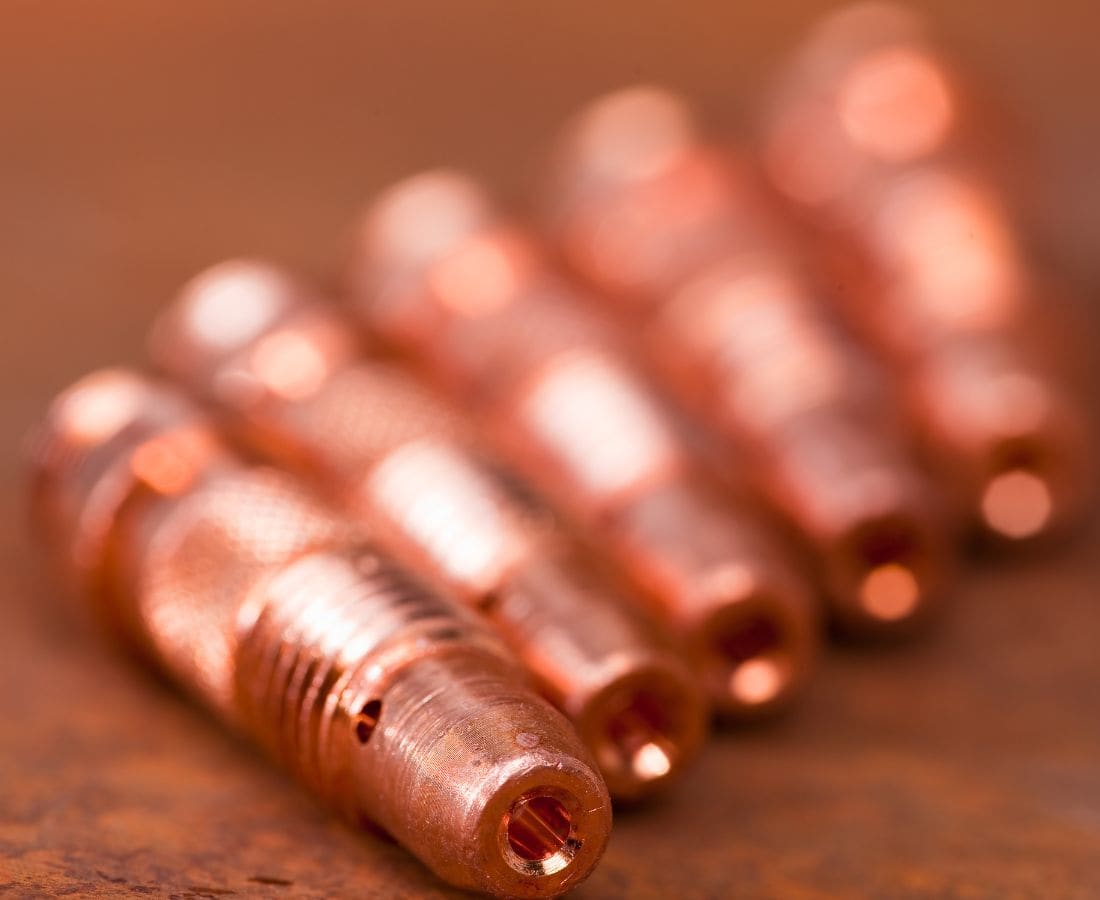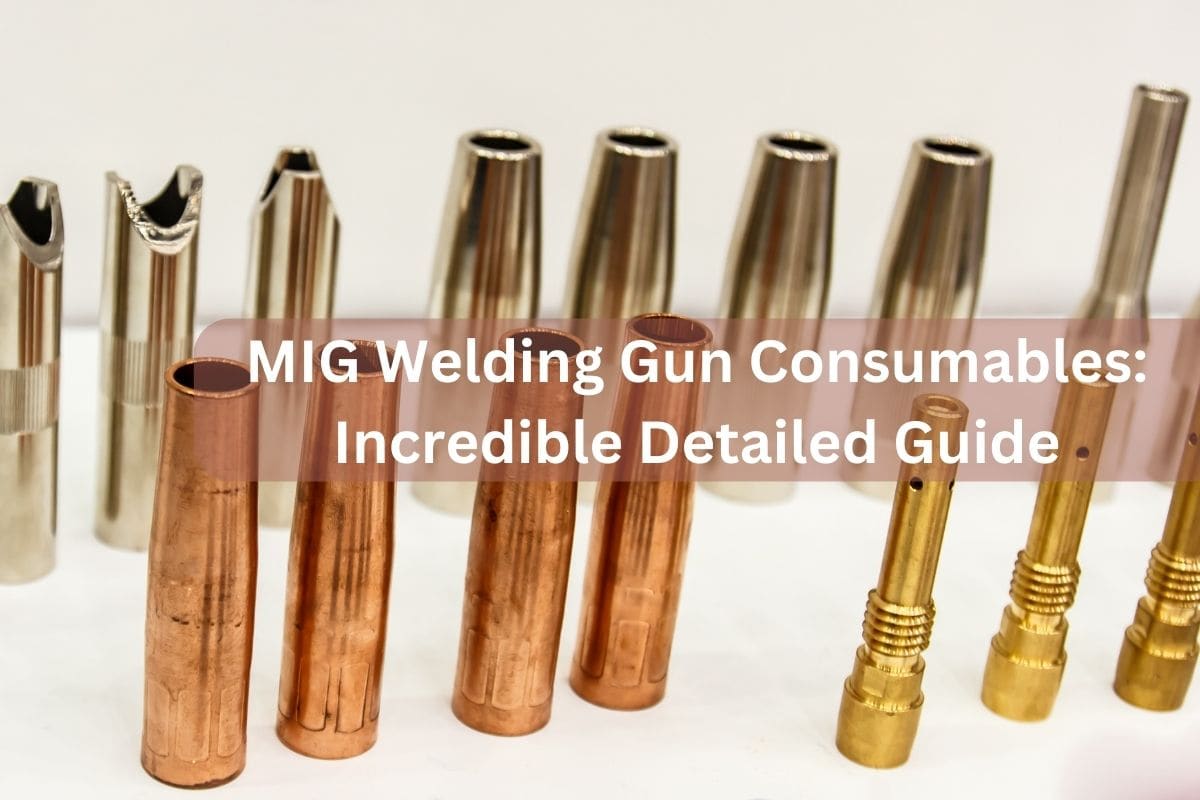Let’s dive deep into the world of MIG welding gun consumables.
At a glance, it might seem just like a minor part of the MIG welding system, but there’s more than meets the eye. Making the right choice can drastically improve your welding experience, both in quality and efficiency.
So, whether you’re a seasoned pro or someone just venturing into the welding arena, this guide will shed light on these vital components.
What Are MIG Welding Gun Consumables?
When we talk about MIG welding gun consumables, we’re referring to those often overlooked components that play an instrumental role in the welding process.
The longevity of these consumables, the quality of your welds, and even cost-effectiveness can be influenced by how you select, store, install, and maintain them.
Components of MIG Welding Gun Consumables
Before you make a choice, it’s essential to understand what’s out there. Let’s break down these components:
Nozzle/Gas Cup
This is where the shielding gas flow is directed towards the weld puddle. Materials vary from brass to copper, and even plated copper. And when it comes to shapes, there’s a buffet of options—straight, tapered, and bottleneck, to name a few.
The shape of your nozzle can make a significant difference. Experiment to find what best suits your technique.
Contact Tips
These are the bridge, ensuring the weld power transfers effectively to the wire, creating the arc. They come in various materials, such as copper, chrome zirconium, and HDP. The size and style can directly impact its performance.
Always ensure the contact tip fits snugly with the wire. A loose fit can compromise the arc’s quality.
Gas Diffusers/Retaining Heads
Playing a dual role, these not only conduct electricity to the contact tip but also distribute the shielding gas evenly. They also keep the contact tip and nozzle steady.
Regularly inspect these for signs of wear and tear.
Liners/Conduit
Think of these as the pathways guiding the welding wire. The types are many—conventional, front-loading, jump, and even dual-locked liners.
Power Pins
Connecting the dots between the welding machine and the MIG gun, these pins are critical for wire, weld power, and gas flow.
Read Also : MIG Welding Gas Pressure: Detailed Look into Nozzles
How Do I Choose the Right MIG Welding Gun Consumables?

Embarking on the quest to pick the right MIG welding gun consumables? It’s less intimidating than it sounds, I promise.
Selecting the right set can profoundly impact the efficiency, quality, and longevity of your welding projects. So, it’s crucial to give this process the attention it deserves.
Firstly, let’s start with understanding your welding needs. Dive into the specifics of the tasks you’ll be performing.
Are you working with delicate, thin materials, or are you tackling robust, thick surfaces?
Recognizing these factors will guide you towards the right shape, size, and material of your consumables.
Now, here’s a simple breakdown to assist you further:
- Material & Size: Remember, the consumable materials range from copper to chrome zirconium. Each has its unique advantages. Think about longevity and the type of welding you’ll be doing. Similarly, size plays a vital role. A mismatched size can compromise the arc quality, so it’s essential to be meticulous here.
- Connection & Positioning: After material and size, focus on the connection style. This ensures seamless communication between your welding machine and MIG gun. And don’t underestimate positioning. The right alignment can elevate your welding experience.
- Liner Type & Inventory: Liners guide the welding wire. Whether you lean towards a conventional, front-loading, or dual-locked liner will depend on your welding style. Lastly, keep an eye on your inventory. Regularly assess your stock to ensure you’re never caught short in the middle of a project.
In essence, the selection process is a blend of understanding your needs, diving into specifics, and then refining based on experience. With time, you’ll develop an instinct for the perfect consumables tailored to your welding endeavors.
Handling MIG Welding Gun Consumables
Storage
Proper storage is paramount for the longevity of your MIG welding gun consumables. Just like you wouldn’t leave a delicate instrument exposed to the elements, these consumables deserve the same care.
The original packaging is designed not just to contain, but to protect. Shielding them from environmental factors such as oxidation ensures they retain their efficiency and efficacy, prepping them for when you need them in action.
Installation
The installation process is akin to laying down the foundation of a building. If that foundation isn’t solid, it can jeopardize the entire structure.
Similarly, by meticulously following the manufacturer’s guidelines, you’re ensuring the consumables function as they’re designed to.
Any deviation or oversight at this stage can magnify into significant problems during welding, disrupting your workflow and potentially compromising the weld’s quality.
Maintenance
Maintenance is the consistent effort that ensures your consumables stay in peak condition for the long run. Think of it as the regular health check-up we need; early diagnosis can prevent larger complications.
By periodically inspecting, you’re catching potential problems before they escalate. Moreover, while solutions like anti-spatter are beneficial, they’re best used judiciously.
Too much of anything can backfire, and in this case, overuse might impede the consumable’s function rather than assist it.
By understanding and integrating these principles of storage, installation, and maintenance, you’re setting yourself up for a seamless and efficient welding experience.
Read Also : GAS vs Gasless MIG Welding: Important Differences Revealed
Common Issues and Solutions in MIG Welding Gun Consumables
Understanding these common challenges can empower you to sidestep them gracefully. Before we explore the list, it’s worth noting that many of these issues stem from improperly selected or maintained consumables.
Now, let’s shine a light on some frequent issues and their solutions:
- Contact Tip Burnback and Erratic Arc
- This typically signals a mismatch in the size or style of the contact tip.
- Solution: Ensure compatibility between your wire size and the contact tip. Regular maintenance checks can also help in early identification.
- Erratic Wire Feeding
- Often caused by a misaligned or worn-out liner.
- Solution: Double-check the alignment and replace liners at the first sign of wear.
- Short Contact Tip Life
- Overheating or using the wrong material can lead to this problem.
- Solution: Opt for high-quality contact tips and ensure the welding current isn’t excessively high.
- Excessive Spatter
- A direct result of using too much anti-spatter or having improper connections.
- Solution: Use anti-spatter solutions judiciously and ensure all connections are secure.
- Porosity in Weld
- Caused by contamination or inadequate shielding gas.
- Solution: Always ensure the welding surface is clean and that there’s sufficient shielding gas flow.
- Birdnesting
- This tangle of wire can be a result of a blockage or an issue with the liner.
- Solution: Regularly inspect and replace liners, and ensure there’s no obstruction in the welding gun.
To sum it all up, prevention is the best cure.
By understanding the root causes of these issues and keeping a keen eye out, you’ll be better equipped to preempt challenges and ensure a smoother welding journey.
Conclusion
MIG welding gun consumables might seem like small cogs in the vast machinery of welding. But, as with many things in life, it’s the little details that often make the most significant difference.
As you continue your journey into the world of welding, remember that practice and knowledge are your best allies.
And when in doubt, revisit this guide. Keep learning, keep practicing, and most importantly, don’t give up!


